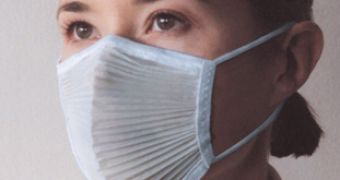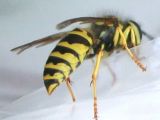Most of us are familiar with the basic principles of an allergic reaction - and at a simple level, it's not a very difficult process to understand. Allergies are basically abnormal responses of our body's immune system to an allergen - a substance that occurs naturally in our environment and which is harmless for other people. Such substances are pollen, dust, animal hair or even food. Virtually anything can trigger an allergic reaction, which can range from itchy skin and runny nose all the way to sudden life-threatening shock reactions. The list of allergens - or allergy triggers - is therefore extremely long, but here is a selection of the most common such triggers and their effects.
1. Pollen
Pollen is one of the most common allergy triggers. Pollen grains are dispersed into the air mainly during the spring and come from trees, grasses, and weeds. Some trees and weeds release pollen in fall and even winter (in warmer climates). Pollen can trigger hay fever or seasonal allergies, and the symptoms include sneezing, runny nose and itchy, watery eyes. The symptoms can be controlled and treated (with various drug sand allergy shots) as well as prevented, mainly by staying indoors.
2. Animal hair
Like it or not, our beloved pets are also on the list of common allergy triggers. The fact is, the oil glands in our pets' skin secret a series of proteins - also present in the animals' saliva - which can cause allergic reactions. The bad news is that the allergy can develop the longer we're coming in direct contact with dogs or cats and it often takes weeks to clear off, even after ending contact with animals. Of course, this doesn't mean that you have to kick your pets out of the house, although keeping them around is probably not going to be as much fun for you. At the very least, consult a specialist about taking medication and turn your bedroom into a pet-free zone. Washing the animal regularly also helps.
3. Insect stings or bites
This is a type of allergy that can take over very quickly and has the potential to be life-threatening. Those of you allergic to insect stings have probably had allergy shots already, in order to prevent anaphylactic shock in case of future stings. Symptoms of anaphylaxis include difficulty breathing, hives, swelling of the face, throat, or mouth, rapid pulse, dizziness and even a sharp drop in blood pressure. In such cases, epinephrine is vital and has to be administered immediately after the sting. Less severe allergic reactions to stings and bites manifest themselves by low fever, persistent swelling and redness at the site of the sting, in addition to fatigue and nausea.
4. Food
Anything from milk and shellfish to strawberries, nuts and wheat can trigger a food allergy. The allergic reaction usually happens shortly after eating the food in question - however, it can also occur hours after the allergen has been ingested. Allergy symptoms include swelling around the mouth and eyes, red spots or hives on your skin, vomiting and diarrhea. The symptoms may be low-key or extremely severe and in life-threatening situations, an epinephrine injection is needed. Common treatments include antihistamines or steroids.

 14 DAY TRIAL //
14 DAY TRIAL // 



